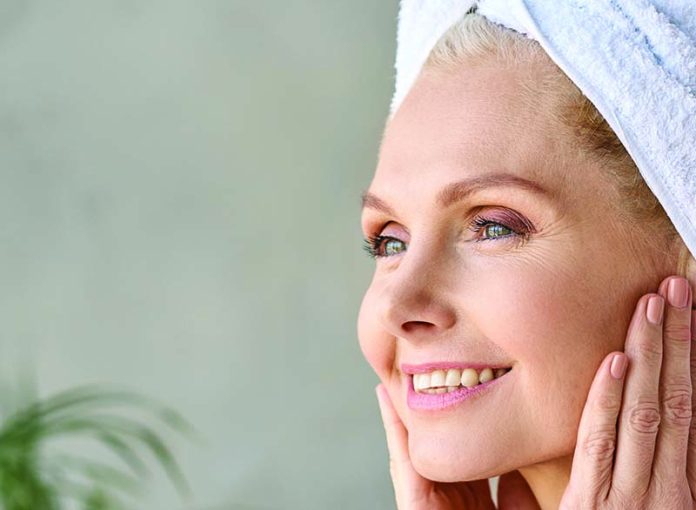A GENERATIONAL GUIDE TO LIVING WELL
The concepts of wellness and wellbeing are frequently talked about and even used interchangeably, but what does it truly mean to live well?
While wellness is technically defined as the state of being in good health, wellbeing takes that idea a step further, encompassing not only being healthy but also happy, comfortable, prosperous and satisfied.
Although common threads help define our personal perceptions of health and wellbeing, that certainly doesn’t mean we all perceive wellness the same way. Over time, we experience changes in mindset, perspective, strengths, and struggles, redefining our notion of what it means to live well. To that end, it’s worth exploring the concept of “generational wellness” and how we can feel young at any age by making smart, simple choices each step of the way.
We regularly rub shoulders with members of six different generations within our Park City and Summit County communities, ranging from the youngest Utah residents and visitors in Generation Alpha (born after 2010) to the eldest in “The Silent Generation” (born 1928-1945). Regardless of our age, however, it’s safe to say our views on the feeling of wellness is the same.
Where we differ is in how we achieve it and understanding that our needs and priorities change. From the foods we eat and how we exercise to friendships and retirement goals, it all changes as we age. Keep reading for simple ways to keep your body tuned up, your mind tuned in, and perhaps your heart inspired to challenge and empower each other to genuinely live well.

GENERATION Z (1997-2012)
The oldest of Generation Z is at least 24, a critical age to establish your own healthy habits. Consider it an investment in your future, putting yourself in a good place to stay healthy for a long time.
Top priority: Your health. Establish care with a primary care physician and get in the practice of having a yearly physical, regardless of your medical history. Know your personal and family health history and inquire about preventative care. Take advantage of health tech. Look to set a healthy sleep routine, getting 7-8 hours of sleep each night and practicing good sleep hygiene, such as avoiding stimulants like caffeine near bedtime or late-night eating, maintaining a consistent sleep schedule, and keeping your bedroom dark, cool and quiet. Wear sunscreen, even when it’s cloudy and you’re indoors.
Your 20s are also a good time to master a few essential skills and foster some personal passions. Learn to cook and start cooking at home. You’re likely to make healthier and often more cost-efficient choices. Also, find a hobby. It doesn’t matter if it’s a book club, art class, exercise group or summer-league team, just choose something that brings you joy. Lastly, forget about screens for a few hours and schedule in time for fun with family and friends.

MILLENNIALS (OR GEN Y, 1980-1996)
Generation Y—commonly referred to as Millennials—is truly the first generation to not know a time before technology, and that bodes well for those looking to take advantage of convenience and flexibility when it comes to technological advances in all facets of health and wellness. Everything from online grocery shopping to virtual fitness classes to telemedicine.
Many millennials are currently in the midst of child-rearing while growing and maintaining a career. Burning the candle at both ends is a difficult pace to sustain, and often results in insufficient sleep, weight gain and diminished “me time.”
Top tips: Prioritize self-care—including 7-9 hours of sleep a night. Practice mindfulness on a 15-minute walk, try a yoga class or Pilates—really any activity that offers you a break in action while minimizing stress and promoting an aspect of physical activity. One great example is the Buddhify app, offering guided meditations lasting from four minutes to 30, and categorizes for a range of activities from “work break” and “walking” to all things sleep and even “using your phone.”
GENERATION X (1965-1980)
Many members of Generation X—who average between early 40s and mid-50s, are highly educated and tend to be independent, tech-savvy, pragmatic and competent. When it comes to healthcare, Gen Xers are mostly concerned with looking good, feeling secure and taking good care of others. Many are both parents and caretakers of their own parents, however, also making them among the most distracted group when it comes to wellness.
Additionally, Generation X (and Baby Boomers) grew up during a time where mental health was still considered a weakness or a taboo topic. Likely there is still work to be done on that front, but the reality of today’s headlines has made mental health a top-line news story in sports, work environments and beyond. It’s never too late to start taking care of your mental health, and today’s technology has made it easier than ever. Online therapy is available in the comfort of your home—and works with many insurance companies—through a variety of services including BetterHelp, Talk Space and MDLive.
Top priority: Schedule preventative screenings. While everyone might agree that prevention is an important part of healthcare, Gen Xers can often find themselves too busy to make it a priority. Don’t skip your annual physical and keep up on age-appropriate screenings including a colonoscopy (preferably by age 45), mammograms and pap tests for women, relevant blood work such as cholesterol screening and vaccines, including for the flu and shingles.

BABY BOOMERS (1946-1964)
By 2050, the U.N. estimates for the first time ever, the world population will have more people over age 65 than children ages 5 and younger. For Americans headed toward retirement (late 50s into 70s), the time is now to focus on staying well and feeling well as they age.
They didn’t grow up online, but Baby Boomers have embraced technology and are open to new ways of connecting with their doctors. That’s a positive development considering Boomers are also more likely to be living with a chronic health condition such as diabetes, cancer or heart disease. Yet, many people in this generation are still working, which also brings a new wave of stressors as Boomers face increasing competition for jobs, burnout, potential age discrimination, and perhaps the prospect of being close to retirement age but can’t actually afford to retire.
Top tips: Manage chronic conditions. For those who have already been diagnosed with a chronic health condition, now is the time to advocate for your healthcare by fully understanding prescribed medical treatments, medications, and risks. Additionally, by staying on top of health conditions, Boomers can minimize healthcare costs and thereby stretch retirement savings. Pair healthful practices with thoughtful consumption of health care, including staying “in network” and comparing costs of treatments and practices that will save money in the long run.
SILENT GENERATION (1928-1945)
During your 70s and beyond, the key to wellness is maintaining healthy lifestyle habits, according to Henry Ford Health. This may be a time when you notice difficulty with focus, balance, and agility. Your appetite and sleep cycle may change as well, and you might find yourself going to bed earlier at night and waking up earlier, too.
The best way to combat the disruption is what you’ve likely done to this point: Maintain a daily schedule for meals, bedtime and waking up. Exercise regularly (just walking 15 minutes daily is beneficial!), incorporating both cardiovascular activities and strength training, if possible, to maintain your balance and strength. And don’t forget to exercise your brain—Scrabble anyone?
Top to-do’s: Visit your general practitioner at least annually and stay current on preventative care and screenings. Stretch your limbs before exercise as flexibility is key to effective workouts. Find a local club or group that shares your same interests and plan weekly get-togethers. Check out the academic courses offered at the Utah Valley University Wasatch Campus and find a new adventure.
WHAT WE ALL HAVE IN COMMON
While it might be easier to spot the differences among us as we age, we all want the same thing in the end: health and happiness for ourselves and our loved ones. Perhaps these generational insights will help us learn from each other and inspire us all in our pursuit of wellness.











